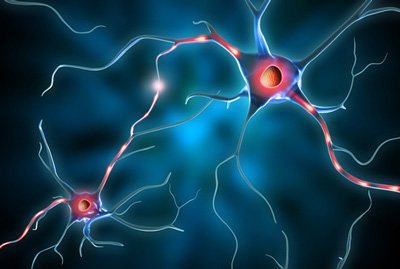MJFF supports two stem cell projects to speed new Parkinson’s disease therapies
Posted: 25 May 2016 | Victoria White, Digital Content Producer | No comments yet
MJFF is to fund two projects leveraging the promise of engineered stem cells to speed new therapies and deeper understanding of Parkinson’s disease…


The Michael J. Fox Foundation for Parkinson’s Research (MJFF) is to fund two projects leveraging the promise of engineered stem cells to speed new therapies and deeper understanding of Parkinson’s disease.
Advances in technology are allowing scientists to engineer dopamine neurons, which degenerate and die in Parkinson’s disease, from skin and blood cells. Researchers are attempting to use these neurons to replace what is lost in Parkinson’s and restore motor function. In addition, the cells can serve as research tools for exploration into the disease process and impact of therapeutic intervention.
Dopamine loss causes Parkinson’s motor symptoms including tremor, rigidity and slowness and may play a role in some non-motor symptoms. Replacing dopamine neurons may provide a regulated stream of dopamine that would alleviate motor symptoms.
Restoring the dopamine supply system
The Michael J. Fox Foundation and the National Stem Cell Foundation (NSCF) are partnering to fund Ole Isacson, MD, director of the Neuroregeneration Research Institute at McLean Hospital and principal faculty at Harvard Stem Cell Institute, to further study implantation of dopamine neurons made from induced pluripotent stem cells (iPSCs) in the brains of non-human primates. In 2015, Dr Isacson published that implanted iPSC-derived dopamine neurons survived and that the therapy was associated with motor improvement. In 2010, Dr Isacson and colleagues published the first evidence of iPSC protocols, showing the function of human midbrain dopamine neurons.
“The restoration of the dopamine supply system would be a significant step forward in our treatment of Parkinson’s disease,” said Dr Isacson. “This project brings us closer to realizing such a therapy, though there is still much work to be done.”
Transplanting dopamine neurons
MJFF also is funding a project led by Lorenz Studer, MD, at Memorial Sloan Kettering Cancer Center, investigating transplantation of dopamine neurons derived from embryonic stem cells drawn from existing cell lines. Dr Studer has received multiple grants from the Foundation to study the potential of embryonic stem cells to treat Parkinson’s, and was part of the team that first successfully developed dopamine neurons from human embryonic stem cells.
In addition to breeding a direct therapy, iPSCs are used to develop and test other treatments. Dopamine neurons engineered from iPSCs provide an unparalleled model to mimic the Parkinson’s disease process in laboratory experiments. Scientists can use this resource to investigate the impact of causal factors such as genetic mutations and environmental exposures and the pathogenic role of cellular processes including mitochondrial dysfunction and oxidative stress. Furthermore, researchers can introduce drug compounds and assess the impact on maintenance or restoration of dopamine function.
iPSCs available at no cost to the research community
To further these investigations, the MJFF-sponsored Parkinson’s Progression Markers Initiative (PPMI) is making iPSCs available at no cost to the research community. PPMI is following a diverse population of people with Parkinson’s, with risk factors of the disease and control volunteers for more than five years across 33 clinical sites. Robust clinical, imaging and biological data from PPMI (also available to all qualified researchers) increases the value of the study’s iPSCs.
“PPMI builds the infrastructure off which the greater research community can drive discovery, validation and replication,” said Mark Frasier, PhD, MJFF Senior Vice President of Research Programs. “The ‘disease in a dish’ model provided by iPSCs is an asset in the development and testing of new treatments, and streamlined access to these well characterized tools will speed progress.”
Golub Capital iPSC PPMI Sub-study
The Golub Capital iPSC PPMI Sub-study has two phases. The first created iPSC lines and fibroblasts from skin samples of 20 people with Parkinson’s disease and five control volunteers. This extensive collection of Parkinson’s and control participant iPSCs with complementary clinical information is now available to interested researchers at http://www.ppmi-info.org/cell-lines/.
The second phase contracts Cellular Dynamics International to make available iPSCs derived from blood samples from 85 PPMI participants. This cohort includes volunteers recently diagnosed with Parkinson’s, those with genetic mutations associated with the disease, people with a clinical risk factor of hyposmia or REM sleep behaviour disorder, and control volunteers. This diverse population and number of samples will increase the scope and scale of investigation with these resources, and those iPSCs will be available later this year.
Related topics
Stem Cells
Related conditions
Parkinson's disease
Related organisations
Michael J. Fox Foundation for Parkinson's Research (MJFF)


